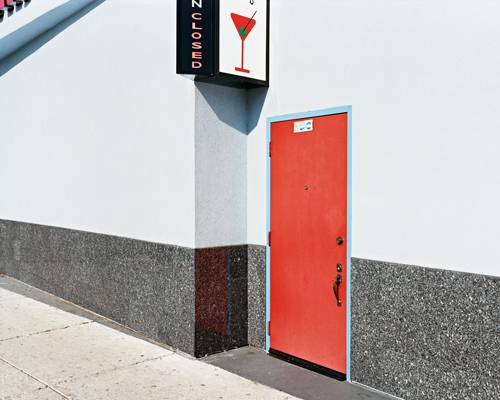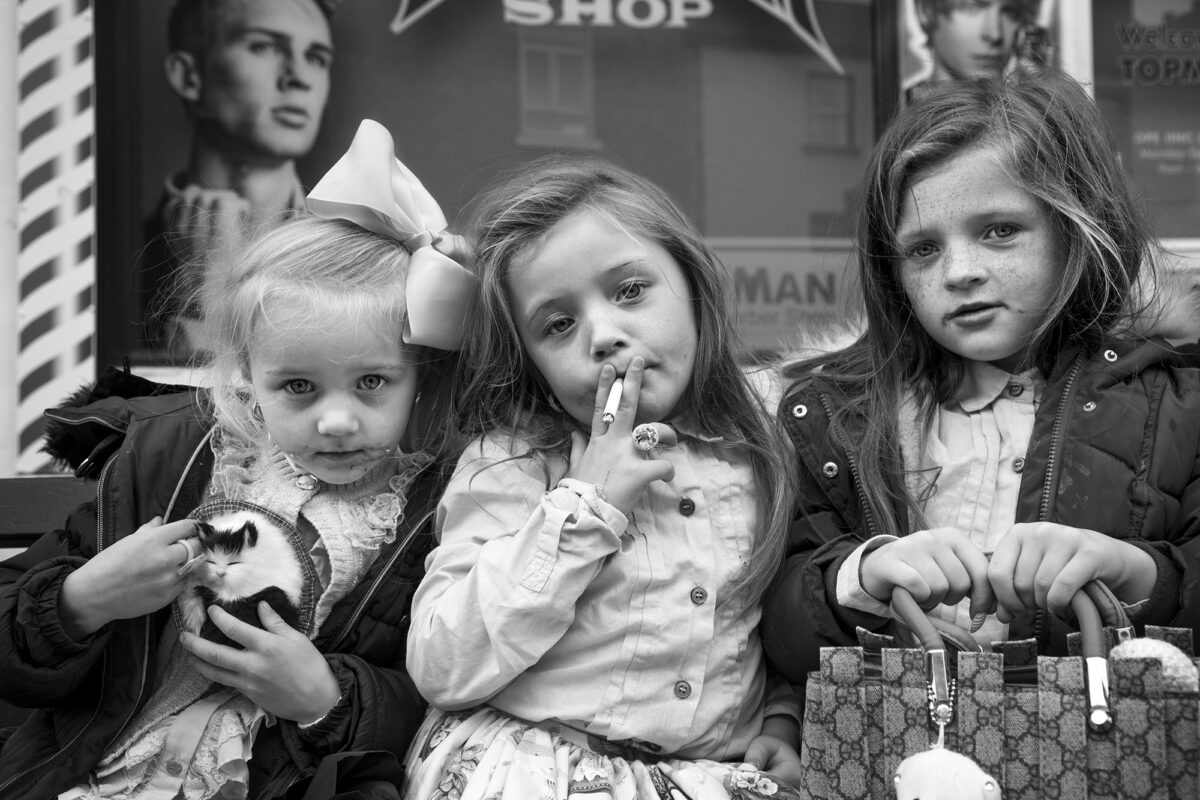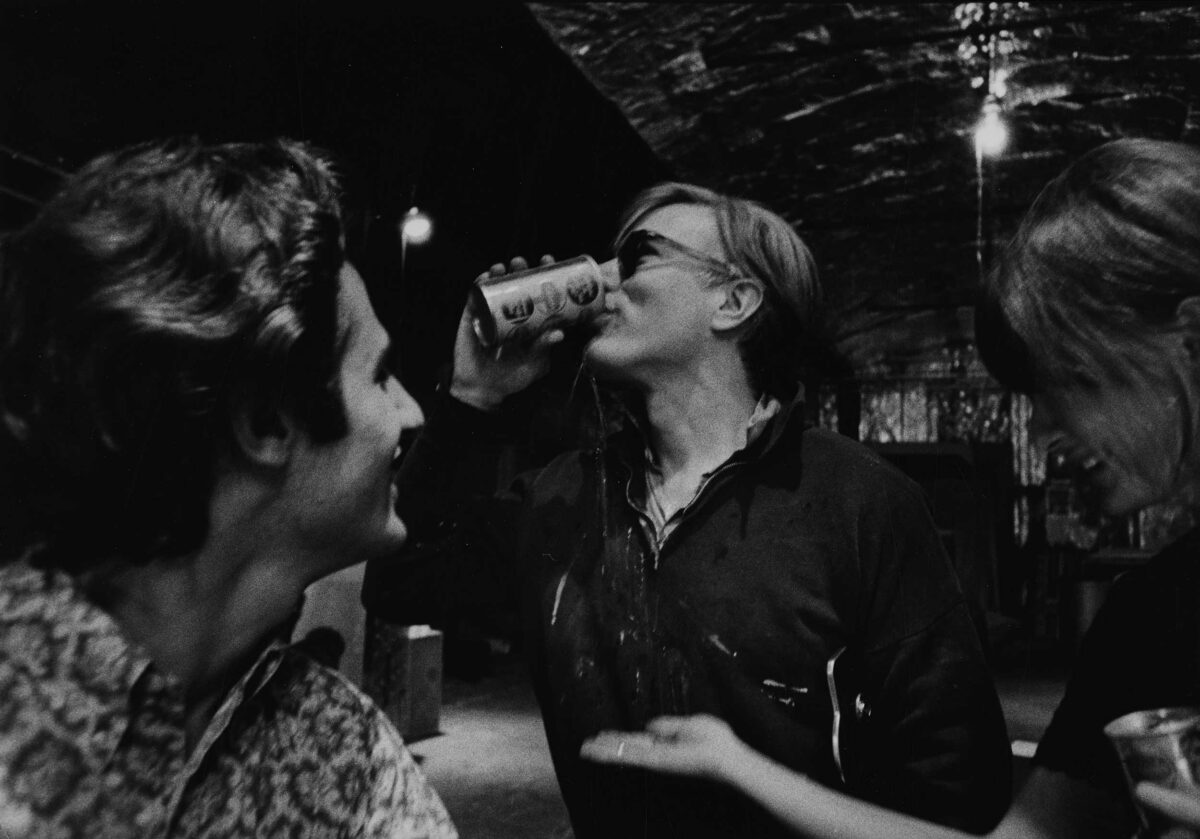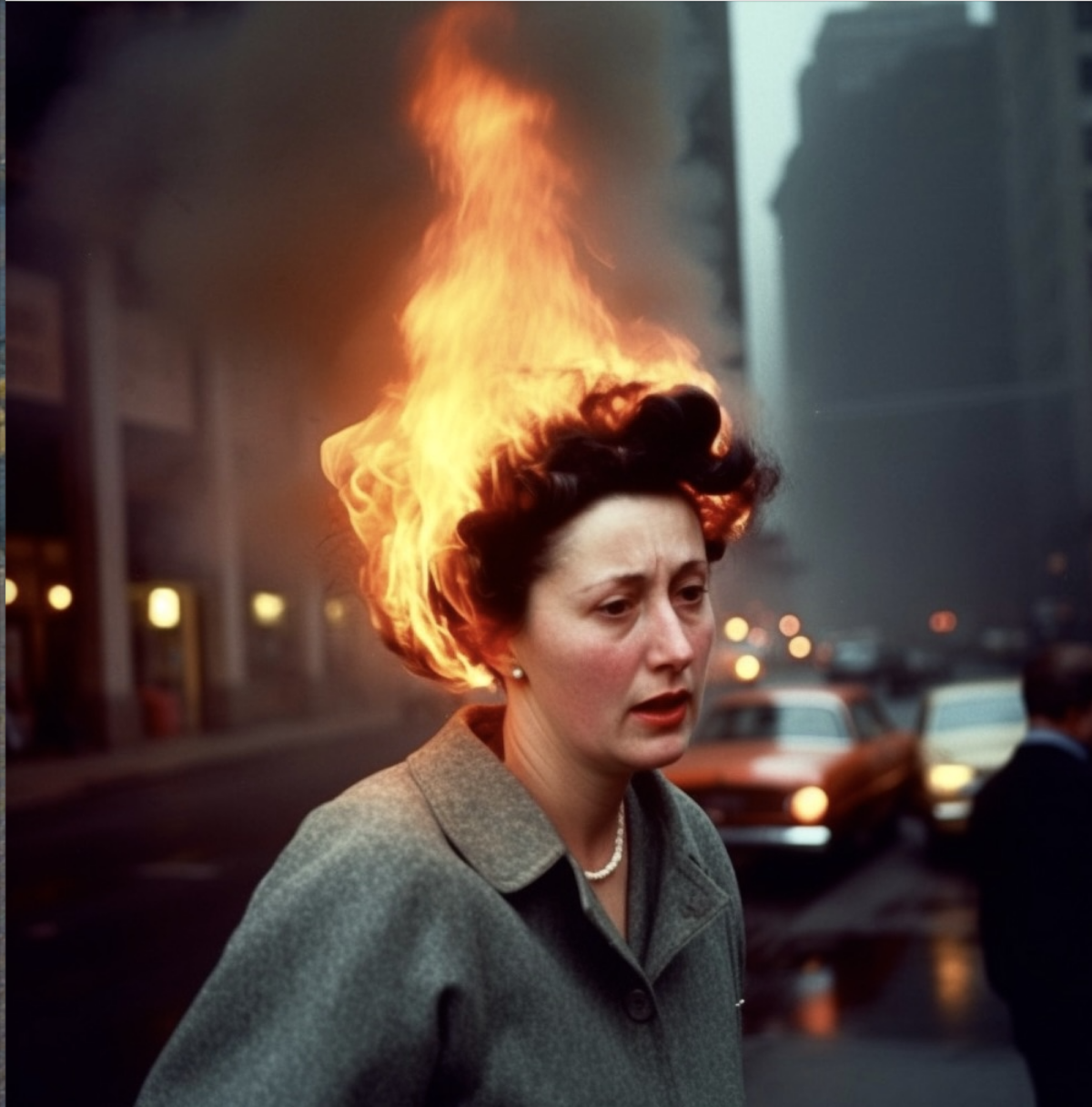The photographs in John Lehr’s series The Island Position make up a typology of storefronts and commercial spaces and the homegrown advertisements that decorate them. Each photograph suggests a particular personality, a psychological profile. Someone made those design decisions, which are alternately expressive, eccentric, anxious, or beseeching. Consider the chaotic proliferation of American flag posters covering the windows in one image, or the sheets of green paper plastered over the windows in another announcing, over and over, in large handwritten print, “WE BUY CANS. PLASTIC.” Or, occasionally, “PLASTIG”. The notes, pictures, paint jobs, and quick fixes, says Lehr, are like accidental signatures that people leave behind.
The tightly cropped photographs, which eliminate contextualizing information about location, nevertheless say a lot about prevailing economic circumstances. Many were taken in strip malls or on main streets with small businesses that are surviving – but maybe only just. Sometimes the seemingly slapdash approach to promotion telegraphs a sense of anxiety. The $100 bills raining down on a sign shouting Dash for Cash could suggest wishful thinking, or a cascade of false promises. Other storefronts are more minimal, or even fanciful, in their design.
While Lehr’s previous work was more about surfaces and found abstraction, these photographs, made between 2012 and 2018, engage more directly with the visual manifestations of consumerism. The Island Position, the name of the show that opens at Kate Werble Gallery March 22 (and the title of a new book published by MACK), refers to an ad surrounded only by editorial content, not by other ads. The title frames the work in terms of the outsized influence of commercialism, but it aslo alludes to the fact that few of the ads in his photographs have anything like a premium position. Some even compete with themselves, like the income tax office that advertises Income Tax five different ways but also promotes, bewilderingly, Bahamas tickets, movies, and CDs.
The content is commonplace enough that you could almost miss how smart these compositions are. Flashes of red pop up repeatedly, in Marlboro signs, rows of detergent bottles and cleaning fluid that recall Andreas Gursky’s 99 cent, and a red door below a sign bearing the cheeky image of a bright red martini glass. Though he shoots with a view camera and makes 4×5-inch negatives, Lehr does a fair amount of tweaking during the printing phase, heightening color, light, and shadow. The idea is that “every part of the picture is straining for attention,” he says, a description that captures an aesthetic quality, but also a certain existential angst embodied by his pictures.











